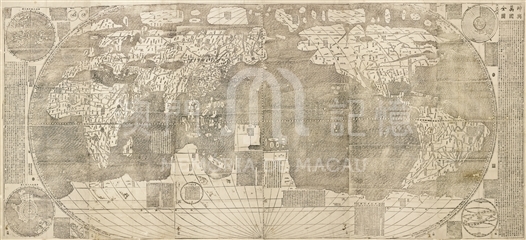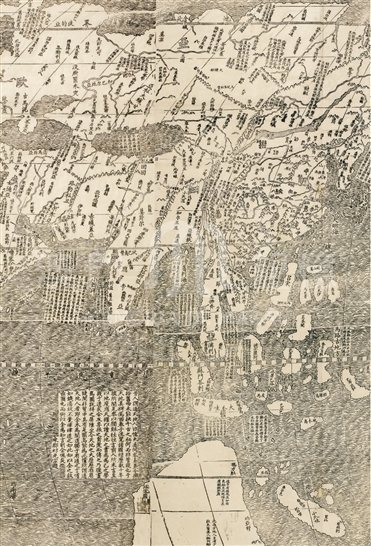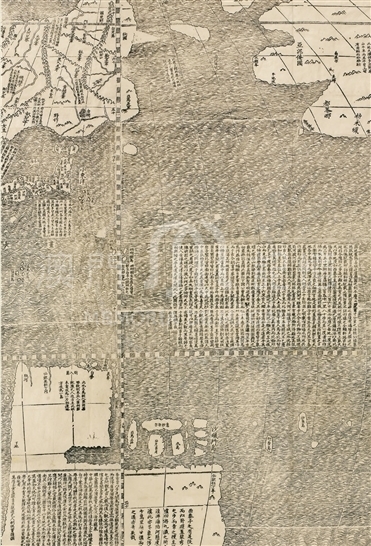Matteo Ricci was among those Jesuits who first entered China. In 1582, he arrived in Macao via Goa (India), with the invitation of the then Jesuit missionary, Alessandro Valignano. Later in the year of 1583 he entered inner land of China, and died in Beijing in 1610. Matteo Ricci and Michele Ruggieri advocated 'adaptation' as the tactics of preaching, later known as 'Matteo Ricci's method', which was widely acknowledged among Chinese scholar-officials, and thus contributed to the communication and dialogues between eastern and western cultures.
Matteo Ricci made different world maps from 1584 to 1603 in China, including both early ones as Shan Hai Yu Di Tu (Complete Terrestrial Map) and Yu Di Quan Tu (Complete Terrestrial Map), and the later ones as Kun Yu Wan Guo Quan Tu (Complete Geographical Map of all the Kingdoms of the World) and Liang Yi Xuan Lan Tu . His early world maps brought the most renewed and even shocking geographical knowledge to the then pompous Chinese people who believed their country was the center of the world. Li Zhi Zao, a scientist in Ming Dynasty, knew of the vastness of the earth from consulting Ricci's Shan Hai Yu Di Tu (Complete Terrestrial Map), and encouraged and further supported him to make a large-scaled Kun Yu Wan Guo Quan Tu (Complete Geographical Map of all the Kingdoms of the World). Li Zhi Zao participated in translating and scribing the map.
It was verified that Kun Yu Wan Guo Quan Tu had been under both influence from the western cartography as the 1570 and later 1587 version of Abraham Ortelius's Theatrum Orbis Terrarum, and by its western counterparts of Gerard Mercator and Petrus Plancius, and from the eastern influence of Chinese old map and geographical resources. The map mentioned above consisted of six panels, and adopted Ortelius's methods of oval shaped projection and the composition of the map. In order to accord with Chinese traditional view of world, Matteo Ricci depicted China as the center of the world, rather than in the eastern frontier from the western counterpart world maps. It depicted the five continents to reveal the new geographical knowledge since the Great Discovery. Meanwhile most profound word descriptions from Europe refreshed Chinese people's minds. A note for Rome was 'Here lives the Pope. He practices the Catholic doctrines, never marries and lives in Rome. All the kingdoms of the European respect him as father.'
Kun Yu Wan Guo Quan Tu has many reproduced versions, but only six original carved ones now exist in the world. Other versions as privately-carved versions, Early Qing carved versions, and colored versions are also rare. This version from Vatican Apostolic Library is known as the one in best condition so far.
Reference:
[1]. D'Elia, P. (1938). Il Mappamondo Cinese del P. Matteo Ricci SI . pp. xxvi. 273. pl. XXX. Città del Vaticano.
[2]. Day, J. D. (1995). The Search for the Origins of the Chinese Manuscript of Matteo Ricci's Maps. Imago Mundi , 47, 94–117.
[3]. 黃時鑒, 龔纓晏. (2004). 利瑪竇世界地圖研究. 上海 : 上海古籍出版社.
Data de atualização: 2020/09/08










Comentários
Comentários (0 participação(ões), 0 comentário(s)): agradecemos que partilhasse os seus materiais e histórias (dentro de 150 palavras).